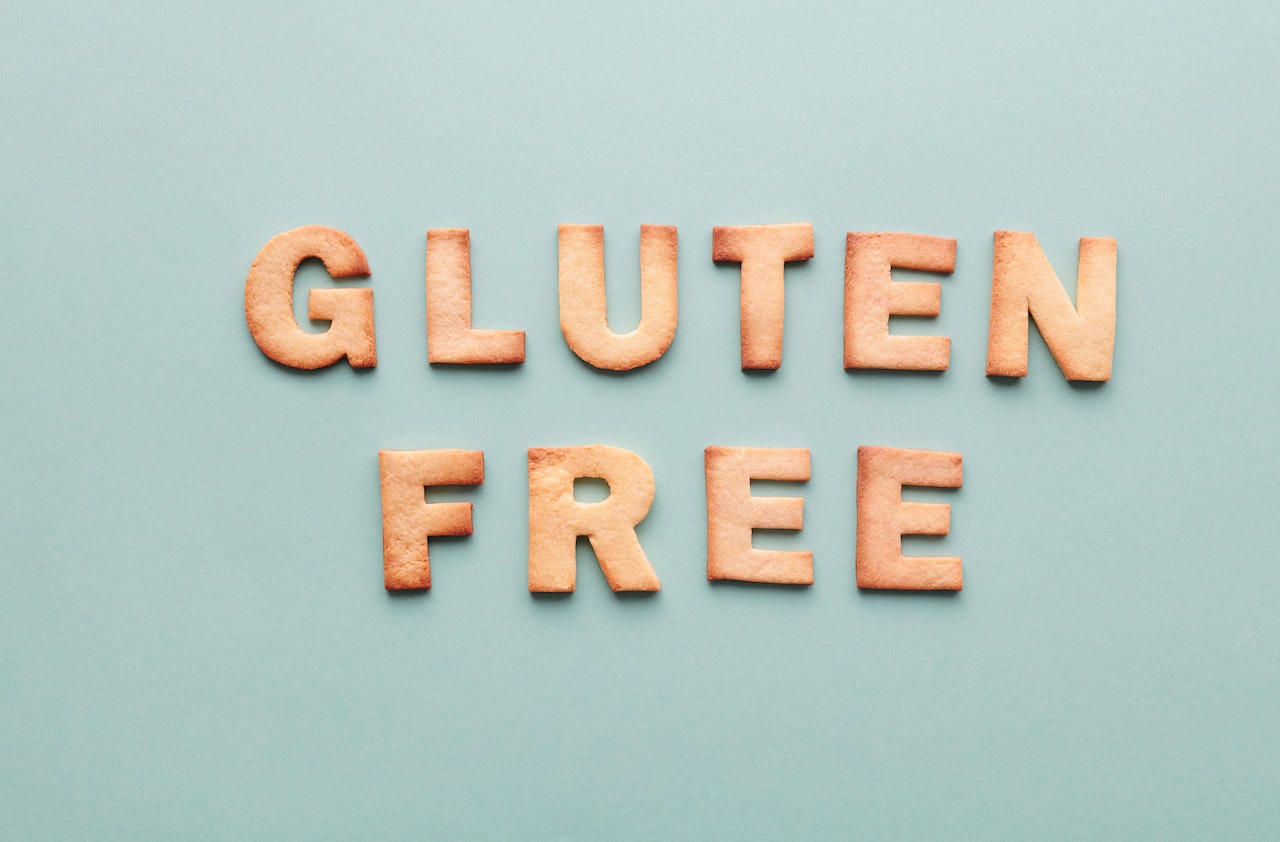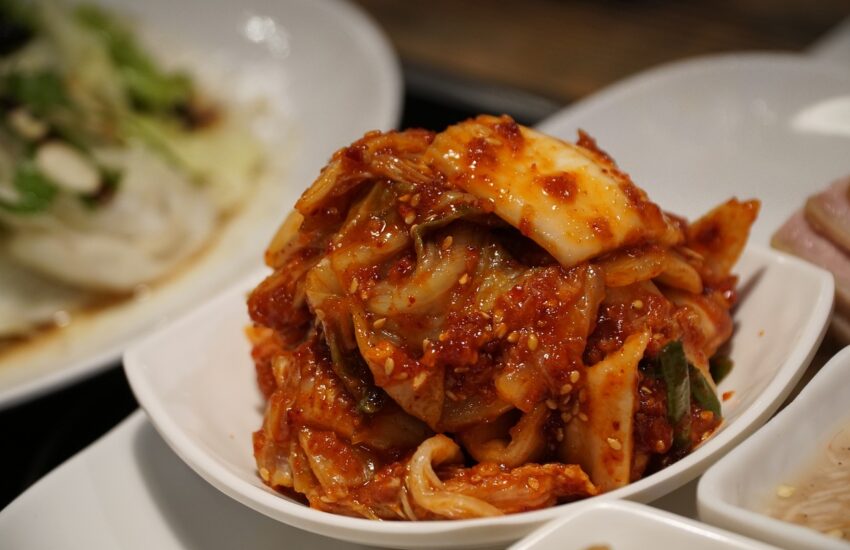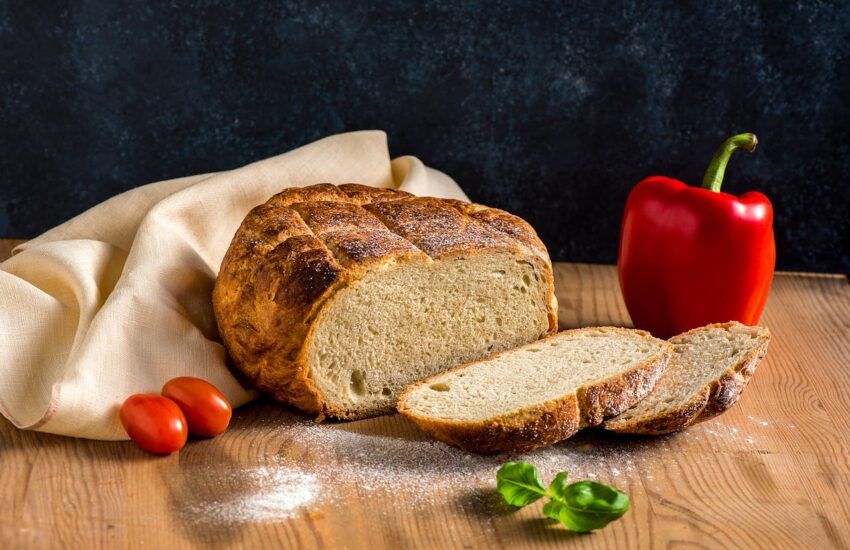Why You Can Be Gluten-Free and Still Suffer From Upset Stomach
It’s Not Just The Gluten That Hurts Your Stomach
Let’s not kid ourselves, there are more than a few health fads out there that just don’t need to exist.
Gluten-free is NOT one of them.
Gluten is a known neurotoxin. Yeah, that’s right, gluten can hurt your brain.
And so can sniffing glue…
So don’t do either, and that’s my article for the day.
In all seriousness, gluten is highly inflammatory and can really damage the gut wall which has been proven to help lead to a ton of serious health complications down the line.
That’s why most people go gluten-free anyways.
They don’t feel well, so they get a food allergy test, find out they’re allergic to gluten, and then cut their intake of bread and other delicious foods and hope to feel better.
Except that some people don’t feel better.
And that ticks them off.
As they sit there, wondering what the heck happened…wondering why, even though they haven’t even gotten within 25 feet of a doughnut or a buttered roll, they still feel awful.
Well my friend, I’ve got some answers.
Can’t say that I’ve incorporated this a lot into my practice, but I have used it with decent success.
The New “Gluten-Free” Explained
I’d be wiling to guess you never heard of FODMAPs.
It’s an odd acronym, and the words that make it up are equally strange.
FODMAP stands for Fermentable Oligosaccharides, Disaccharides, Monosaccharides and Polyols.
In plain English, it means these are sugars and fibers that can easily ferment inside of your stomach and cause some serious bloat and digestive concerns.
The reason people can go gluten-free and still experience digestive issues (excess gas, stomachaches, painful bloating, and constipation, diarrhea) is because your body can’t digest these small-chained sugars and fibers and they rot inside of you.
Ew,
It doesn’t sound pleasant, because it isn’t.
First, there’s a long list of food types that are considered to be FODMAP.
And many of them are healthy, or at least you’d think they are after you’ve kicked all the “Sugary Bread Treats.”
There’s also a breakdown of “High” FODMAP foods along with low FODMAP foods.
I’ll be getting to that in just a moment, but I want to talk a bit more about what FODMAP foods are and what can be done to help out with your digestive symptoms.
Understanding The FODMAP Diet
Credit for the FODMAP diet belongs to Sue Shepard, who’s a physician in Australia.
Shepard discovered FODMAPS after she was diagnosed with Celiac’s disease (intolerance to gluten) and discovered going gluten-free didn’t cure her IBS.
So she went to work researching what caused the gas. What she reasoned is, it could actually be Will willinside of foods we eat that cause our stomachs to balloon out after a healthy meal.
As she said:
“Exciting research shows that it may have been the fructans all along that were triggers for symptoms in non-celiac gluten-sensitive patients,” Shepherd told Yahoo Food. “The scenario is possible when you think about it. People felt some improvement eating gluten-free foods, so assumed it was gluten that was the problem – but by restricting gluten, a person has actually simultaneously restricted some of their fructan intake when avoiding wheat, rye and barley,”
After coming up with her hypothesis, she then went on to pursue a PHD in studying FODMAPs. Her research led to the diet, and she said that when the diet is introduced as many as 75% of dieters saw a decrease in their symptoms.
That’s a pretty good take-rate.
So now that you see where it came from I’ll get into how the actual diet works.
The Easy To Understand FODMAP Diet Breakdown
So one of the things about the FODMAP diet is it isn’t necessarily permanent.
There’s a two-step process to follow to find out A: which foods you’re sensitive to, and B: which you can enjoy at your leisure.
The first thing you do is eliminate all high FOMDAP foods for a period of two months.
If you do that and your symptoms go away then you know FODMAPs was the root case of your discomfort.
So two months, not the rest of your life.
Once you see the list of foods that are high FODMAP you’ll see why this is a relief.
Anyways, after the two months you begin to reintroduce foods to see which ones “set you off”
If, all of the sudden you reintroduce X and start creating more gas than an offshore drilling rig, you know that’s a food you should avoid. If reintroduction doesn’t set you off then you can continue to eat that food and add more in your diet while monitoring your results.
Pretty simple, right?
Ok, so get ready. I’ve taken the liberty of grabbing this list from ibsdiets.com and shared it with you.
Try not to faint when you see which foods you can’t enjoy (for two months).
HIGH FODMAP FOODS
High FODMAP food (things to avoid / reduce)
Vegetables and Legumes
- Garlic – avoid entirely if possible
- Onions – avoid entirely if possible
- Artichoke
- Asparagus
- Baked beans
- Beetroot
- Black eyed peas
- Broad beans
- Butter beans
- Cauliflower
- Celery – greater than 5cm of stalk
- Kidney beans
- Leeks
- Mange Tout
- Mushrooms
- Peas
- Savoy Cabbage
- Soy beans
- Split peas
- Scallions / spring onions (bulb / white part)
- Shallots
Fruit – fruits can contain high fructose
- Apples
- Apricots
- Avocado
- Blackberries
- Cherries
- Currants
- Dates
- Feijoa
- Grapefruit
- Lychee
- Mango
- Nectarines
- Peaches
- Pears
- Persimmon
- Plums
- Pomegranate
- Prunes
- Raisins
- Tinned fruit in apple / pear juice
- Watermelon
Meats, Poultry and Meat Substitutes
- Prosciutto
- Chorizo
- Sausages
- Processed meat
Cereals, Grains, Breads, Biscuits, Pasta, Nuts and Cakes
- Wheat-containing products such as (be sure to check labels):
- Biscuits
- Breadcrumbs
- Cashews
- Cakes
- Croissants
- Crumpets
- Egg noodles
- Muffins
- Regular noodles
- Pastries
- Pasta made from wheat
- Sourdough
- Udon noodles
- Wheat bread
- Wheat cereals
- Wheat flour
- Wheat rolls
- Wheatgerm
- Barley
- Bran cereals
- Couscous
- Gnocchi
- Muesli
- Pistachios
- Rye
- Semolina
Condiments, Sweets, Sweeteners and Spreads
- Agavae
- Fructose
- Gravy, if it contains onion
- High fructose corn syrup (HFCS)
- Honey
- Milk chocolate
- Relish
- Stock cubes
- Sugar-free sweets containing polyols – usually ending in -ol or isomalt
- Inulin
- Isomalt
- Maltitol
- Mannitol
- Sorbitol
- Xylitol
Prebiotic Foods
- The follow items can be added to yoghurts, snack bars etc:
- FOS – fructooligosaccharides
- Inulin
- Oligofructose
Drinks
- Beer – if drinking more than one bottle
- Dandelion tea
- Fruit and herbal teas with apple added
- Fruit juices in large quantities
- Fruit juices made of apple, pear, mango
- Orange juice in quantities over 100ml
- Rum
- Sodas containing High Fructose Corn Syrup (HFCS)
- Soy milk made with soy beans – commonly found in USA
- Sports drinks
- Tea, fennel
- Tea, chamomile
- Tea, oolong
- Wine – if drinking more than one glass
Dairy Foods
- Buttermilk
- Cream cheese
- Cream
- Custard
- Ice cream
- Milk – cow, goat and sheep
- Sour cream
- Yoghurt – including greek yogurt
Yeah, it’s quite a doozy.
The specifics of avoidance and inclusion in your diet can always be tested. What you’ll then do is eat the following foods for the next 2 months.
Here’s that list, again from www.ibsdiets.com
LOW FODMAP FOODS
Low FODMAP food (good to eat food)
If quantities are given, these are the highest amount allowed.
Vegetables and Legumes
- Alfalfa
- Bamboo shoots
- Bean sprouts
- Bok choy / pak choi
- Broccoli – avoid large servings
- Brussel sprouts – 1 serving of 2 sprouts
- Butternut squash – 1/4 cup
- Cabbage – 1 serving of 1 cup
- Carrots
- Celery – less than 5cm of stalk
- Collard greens
- Corn / sweet corn- if tolerable and only in small amounts – 1/2 cob
- Courgette
- Chick peas – 1/4 cup
- Chilis – if tolerable
- Chives
- Cucumber
- Eggplant / aubergine
- Fennel
- Green beans
- Green pepper (green bell pepper)
- Ginger
- Kale
- Leek leaves
- Lentils – in small amounts
- Lettuce
- Marrow
- Okra
- Olives
- Parsnip
- Radish
- Red peppers (red bell pepper)
- Potato
- Pumpkin
- Pumpkin, canned – 1/4 cup, 2.2 oz
- Scallions / spring onions (green part)
- Silverbeet / chard
- Spinach, baby
- Squash
- Swede
- Sweet potato – 1/2 cup
- Tomato – avoid cherry tomato
- Turnip
- Yam
- Zucchini
Fruit
- Bananas
- Blueberries
- Boysenberry
- Cantaloupe
- Cranberry
- Clementine
- Dragonfruit
- Grapes
- Honeydew and Galia melons
- Kiwifruit
- Lemon including lemon juice
- Lime
- Mandarin
- Orange
- Passion fruit
- Paw paw
- Papaya
- Pineapple
- Raspberry
- Rhubarb
- Strawberry
- Tangelo
Meats, Poultry and Meat Substitutes
- Chicken
- Beef
- Lamb
- Pork
- Quorn, mince
- Turkey
- Cold cuts / deli meat / cold meats such as ham and turkey breast
Fish and Seafood
- Canned tuna
- Fresh fish e.g.
- Salmon
- Cod
- Haddock
- Plaice
- Trout
- Seafood (ensuring nothing else is added) e.g.
- Crab
- Lobster
- Shrimp
- Mussels
- Oysters
Cereals, Grains, Breads, Biscuits, Pasta, Nuts and Cakes
- Wheat-free or gluten-free breads
- Bread made from oats, rice, corn, and potato flours
- Wheat-free or gluten-free pasta
- Buckwheat noodles
- Rice noodles
- Porridge and oat based cereals
- Cornflakes – 1/2 cup
- Rice bran
- Rice Krispies
- Almonds – max of 15
- Amaranth
- Brazil nuts
- Bulgur / bourghal – 1/4 cup cooked, 44g serving
- Buckwheat
- Buckwheat flour
- Brown rice / whole grain rice
- Cornflour / maize
- Crispbread
- Corncakes
- Coconut – milk, cream, flesh
- Corn tortillas, 3 tortillas
- Hazelnuts – max of 15
- Macadamia – max of 10
- Millet
- Oats
- Oatcakes
- Peanuts
- Pecans – max of 15
- Pine nuts – max of 15
- Polenta
- Popcorn
- Potato chips, plain
- Potato flour
- Pumpkin seeds – max of 1 – 2 tbsp
- Quinoa
- Rice cakes
- Rice crackers
- Rice flour
- Sesame seeds – max of 1 – 2 tbsp
- Spelt
- Sunflower seeds – max of 1 – 2 tbsp
- Sorgum
- Tortilla chips
- Walnuts – max of 10
- White rice
Condiments, Sweets, Sweeteners and Spreads
- Aspartame
- Acesulfame K
- Barbecue sauce
- Chocolate, dark
- Chutney, 1 tablespoon
- Fish sauce
- Garlic infused oil
- Golden syrup
- Glucose
- Jam / jelly, strawberry
- Ketchup (USA) – 1 sachet
- Maple syrup
- Marmalade
- Mayonnaise – ensuring no garlic or onion in ingredients
- Mustard
- Olive oil
- Oyster sauce
- Pesto sauce – less than 1 tbsp
- Peanut butter
- Saccharine
- Soy sauce
- Sweet and sour sauce
- Sucralose
- Sugar – also called sucrose
- Tomato sauce (outside USA) – 2 sachets, 13g
- Vegemite
- Vinegar, balsamic – less than 2 tbsp
- Vinegar, rice wine
- Worcestershire sauce
Drinks
- Alcohol – is an irritant to the gut, limited intake advised:
- Beer – limited to one drink
- Clear spirits such as Vodka
- Gin
- Whiskey
- Wine – limited to one drink
- Coffee, espresso, regular or decaffeinated, black
- Coffee, espresso, regular or decaffeinated, with up to 250ml lactose free milk
- Coffee, instant, regular or decaffeinated, black
- Coffee, instant, regular or decaffeinated, with up to 250ml lactose free milk
- Espresso, regular, black
- Fruit juice, 125ml and safe fruits only
- Lemonade – in low quantities
- Soya milk made with soy protein
- Sugar free fizzy drinks / soft drinks / soda – such as diet coke, in low quantities as aspartame and acesulfame k can be irritants
- ‘Sugar’ fizzy drinks / soft drinks / soda that do no contain HFCS such as lemonade, cola. Limit intake due to these drinks being generally unhealthy and can cause gut irritation
- Tea, black, weak e.g. PG Tips
- Tea, chai, weak
- Tea, fruit and herbal, weak – ensure no apple added
- Tea, green
- Tea, peppermint
- Tea, white
- Water
Dairy Foods and Eggs
- Butter
- Cheese, brie
- Cheese, camembert
- Cheese, cheddar
- Cheese, cottage
- Cheese, feta
- Cheese, mozzarella
- Cheese, ricotta – 2 tablespoons
- Cheese, swiss
- Dairy free chocolate pudding
- Eggs
- Gelato
- Lactose free milk
- Lactose free yoghurt
- Margarine
- Oat milk
- Parmesan cheese
- Rice milk
- Sorbet
- Soy protein (avoid soya beans)
- Swiss cheese
- Tempeh
- Tofu
- Whipped cream
Cooking ingredients, Herbs and Spices
- Herbs: Basil, Cilantro, Coriander, Mint, Oregano, Parsley, Rosemary, Tarragon, Thyme
- Spices: All spice, Cinnamon, Cumin, Five spice, Paprika, Turmeric
- Baking powder
- Baking soda
- Cocoa powder
- Cream, 1/2 cup
- Gelatine
- Ghee
- Icing sugar
- Lard
- Salt
- Vegetable oil
Information overload I’m sure.
Bottom line, that’s what a FODMAP diet looks like.
Is a FODMAP Diet Worth It?
Depends. Do you want to feel better?
In an interview, Shepard said the following:
It’s important that people liberalize the diet to achieve the greatest amount of variety – and anyone following the process should consult with a nutritionist to ensure they’re properly guided through the second phase,” adds Shepherd, who stressed that it’s a low FODMAP diet, not a no FODMAP diet. “The underlying philosophy isn’t looking for foods that are entirely free from FODMAPs, but that rather contain a small amount of them,” she clarified.
So, based on that I’d say its worth it.
Bottom line, if you want to experience “Health As It Ought To Be” and have gone gluten-free with little results, this might be the next thing to consider.
Hope that helps your stomach woes.
Talk soon,
Dr. Wiggy
www.HealthAsItOughtToBe.com


